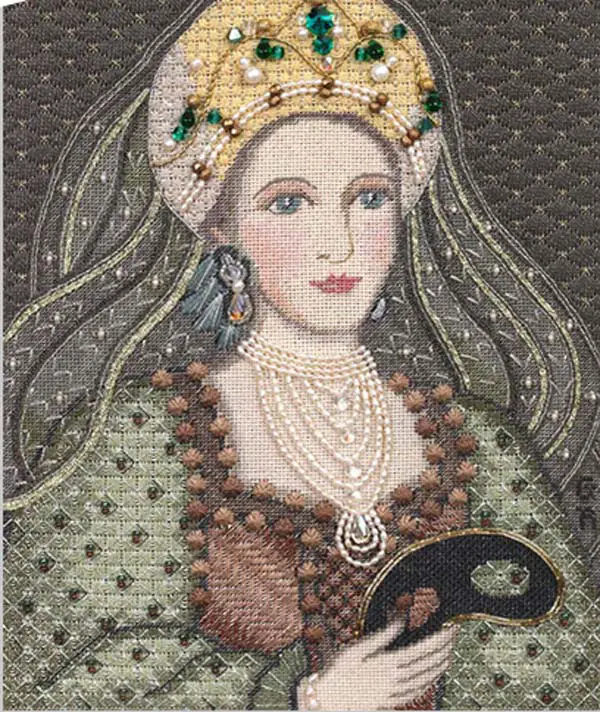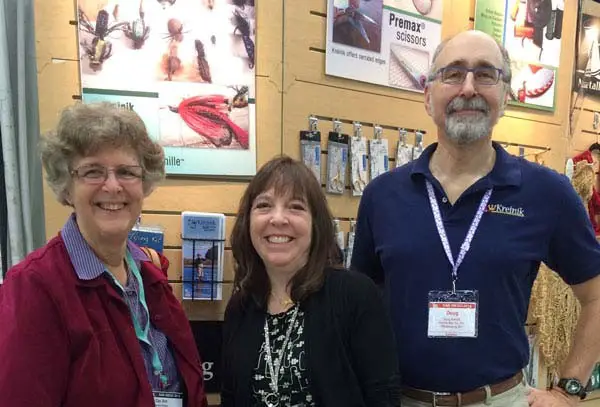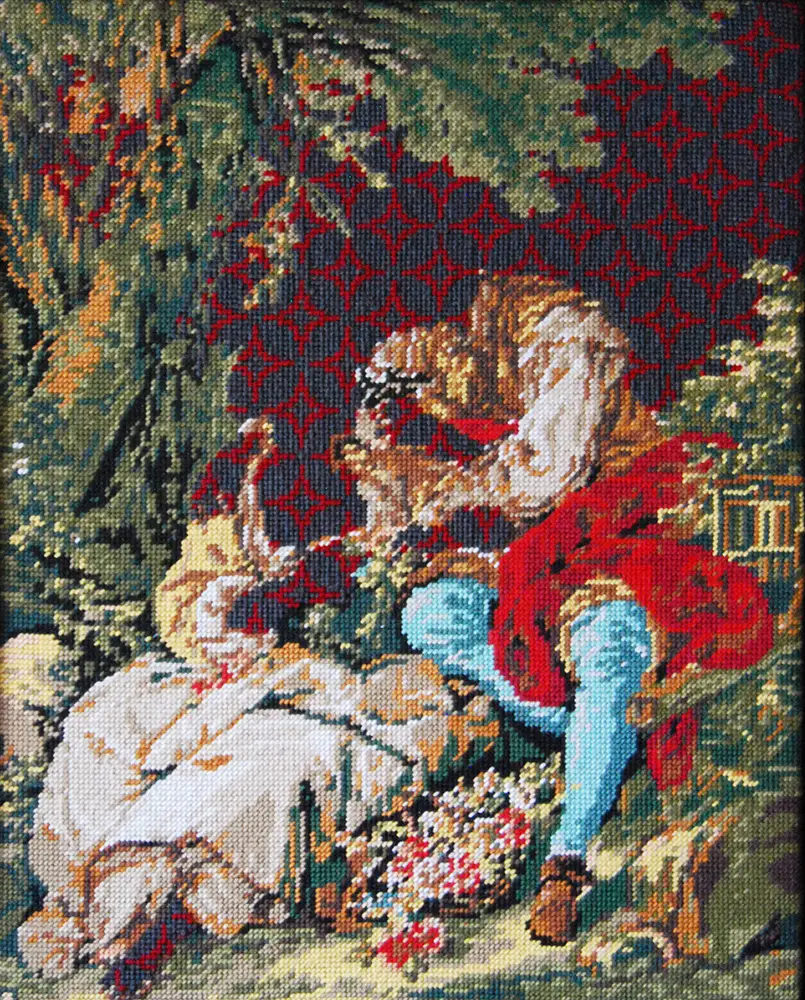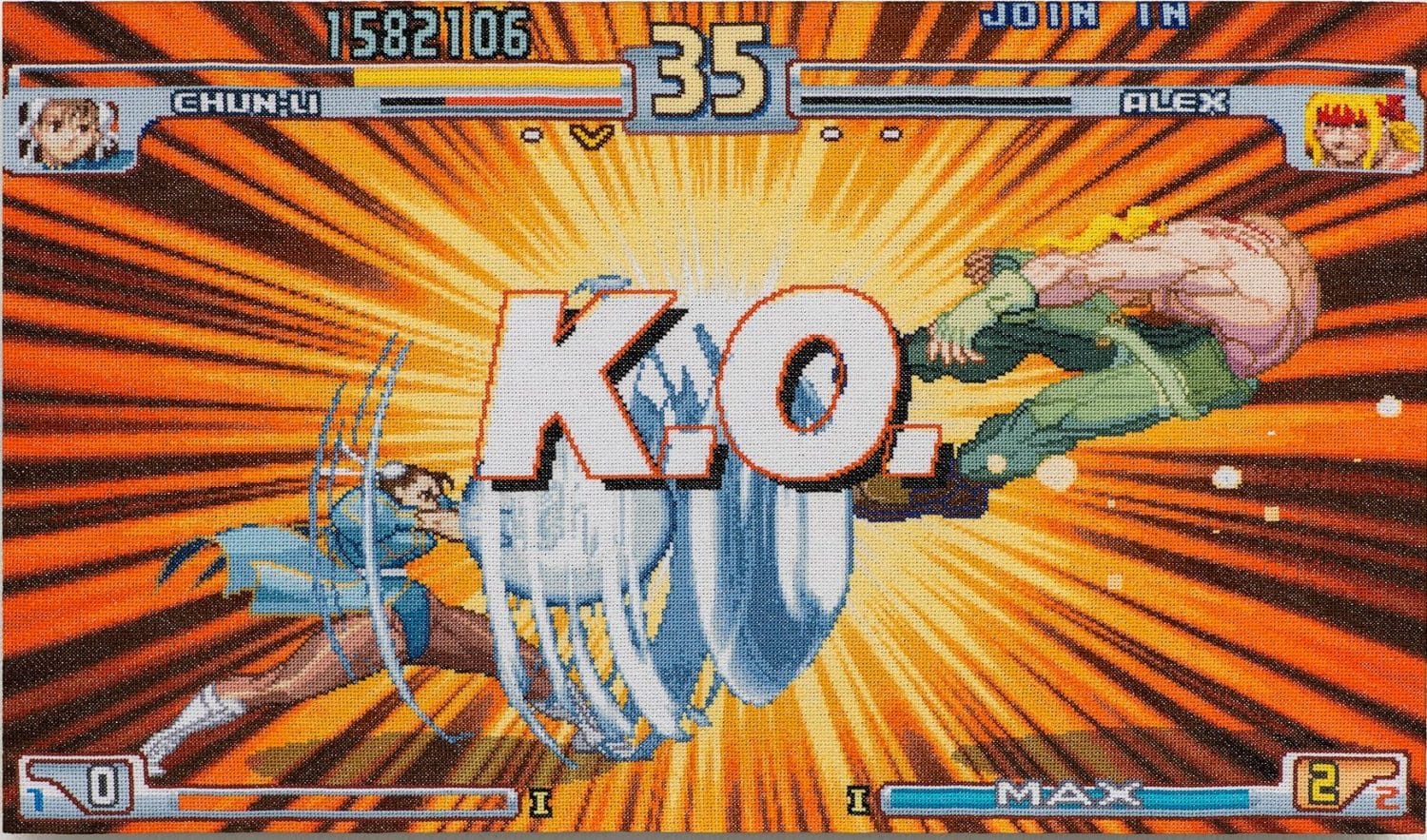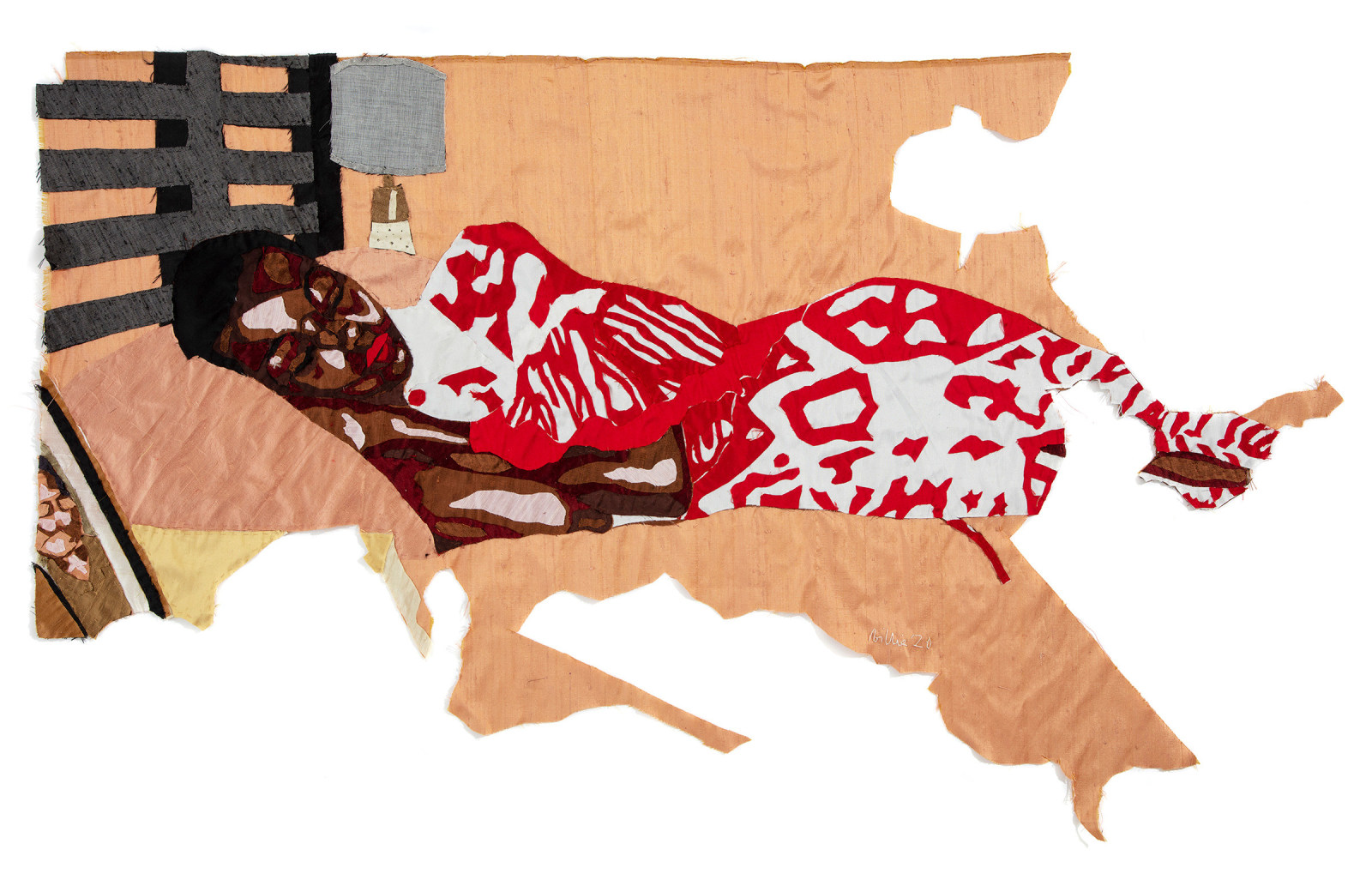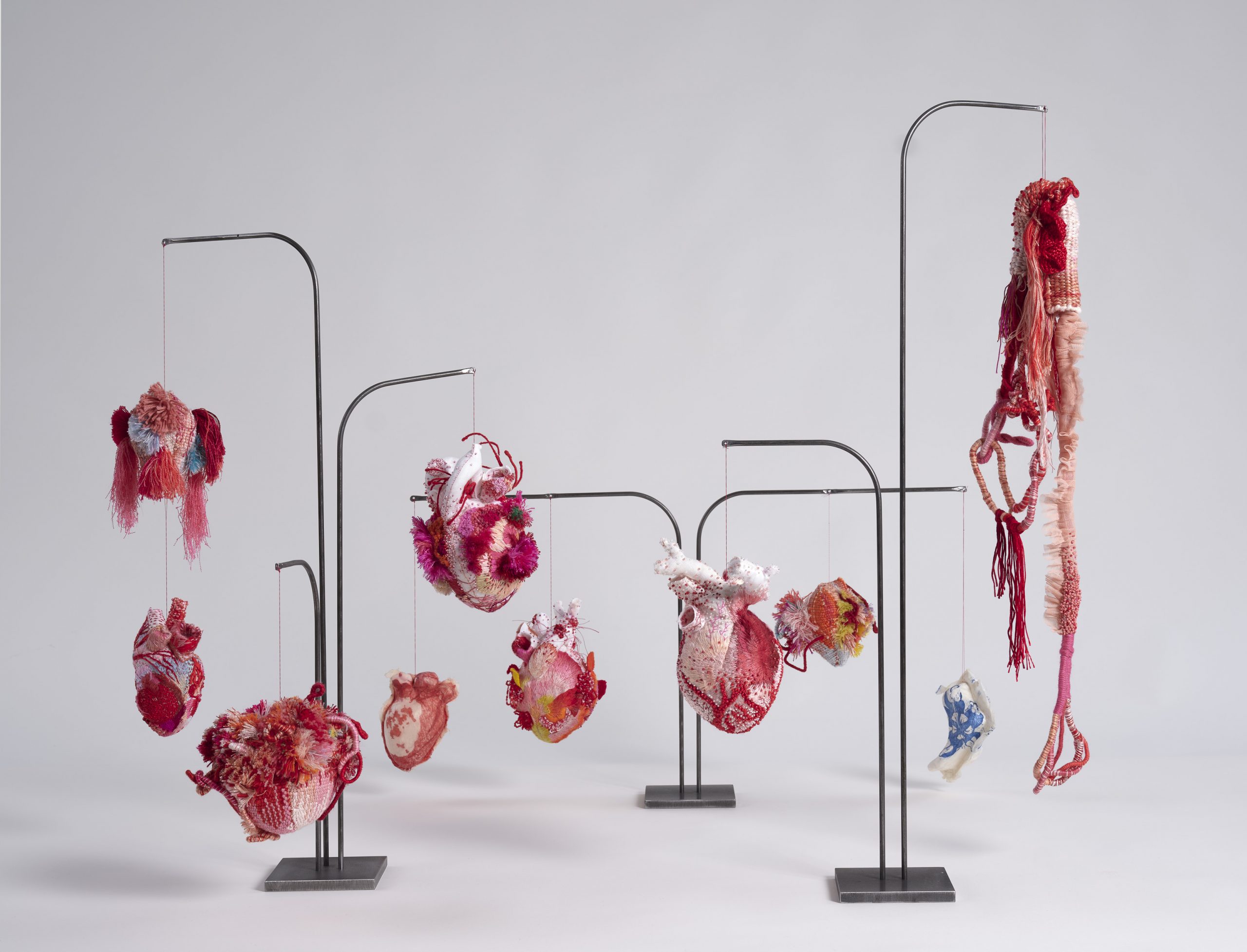It’s Kreinik Calling! where Dena Lenham from Kreinik Manufacturing Company shares inspiration and innovation with threads!
Have you ever walked up to a painting in a museum, a quilt in an exhibit, or a relief on a building, and thought: “Wow, how did they do that?” I responded that way when I saw needlepoint designer Gay Ann Rogers’ newest project, The Young Catherine. An artist’s vision, technique, ability, and the finished art itself inspires and touches us as humans regardless of the medium. You and I are stitchers—all ages and skill levels—connected by common stitches and shared passion, so I know you will enjoy this behind-the-scenes look at the design and designer. She adds layers to our favorite stitches, mixes in beautiful fibers, and teaches us that it’s ok to reach for the stars in our projects.
Take a read through this interview with Gay Ann Rogers, a wonderful lady and designer I’ve known for many years. The Young Catherine is extraordinary (“exemplary & bloody amazing” says one stitcher on Instagram who is “currently #losingmysh!% over it!”), yet not out of reach; Gay Ann offers complete instructions/chart/diagrams in a kit, and will be teaching the project via the Shining Needle Society, an online needlework group.
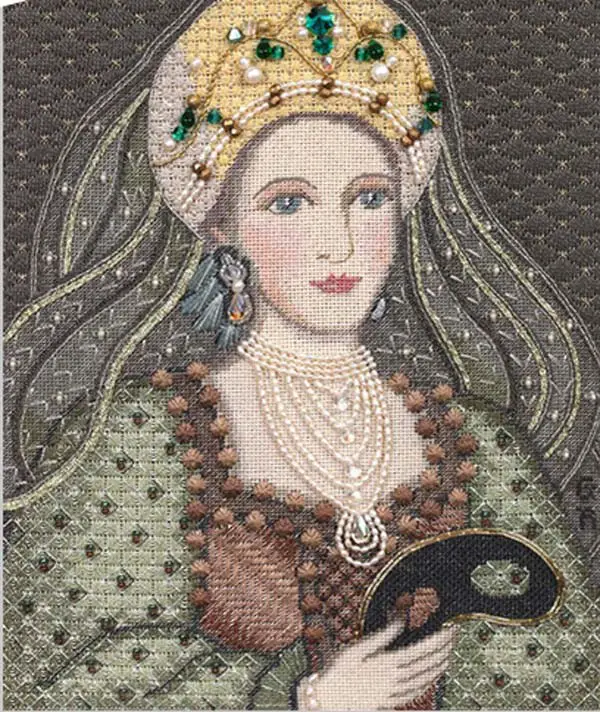
What inspired you to create this design?
Gay Ann: About five years ago I designed and stitched a portrait of Elizabeth 1. You can find it on my website, I think. It was a very successful project for me back then and my followers wanted me to do another big one. They wanted me to do Henry Vlll but I wanted to do another powerful woman. My husband suggested Catherine the Great. The style of the two portraits is so different, having to do in part with the evolution of painting in the 200 years between the two.
How long did it take to design The Young Catherine?
From first stroke of pencil on a drawing pad to last stitch on the piece it took me just about 6 weeks. I stitched her last summer.
Why did you choose Congress Cloth for this piece instead of linen or canvas?
Congress cloth is usually my ground of choice, although I sometimes work on 18-mesh canvas, and occasionally (very occasionally) on linen. I am essentially a needlepoint person who tinkers with some counted thread techniques and some surface techniques as well.
The face is extraordinary; how did you achieve such detail, shading, and expression?
Thanks! When I did Elizabeth’s face, I noticed in studying the portraits that there wasn’t much shading. By the time of Catherine’s age, it was dominant. I had been on a personal study course of Cezanne years ago and I had evolved from him a way of shading very unlike traditional shading. I used the techniques to do Catherine’s face. They are essentially blocks of color. I don’t like traditional shading in needlepoint, it ends up looking too splotchy to me. I wrote all about it on my website.
As far as the face goes, I have tinkered with figure drawing and faces the whole of the time I’ve designed needlepoint. I am a great believer in trial and error — I sit with all kinds of threads in a horseshoe shape around me and then try and rip, try and rip until I get the effect I’m looking for. For Catherine’s face I stitched it partially three times on doodles and then once fully on the doodle. I stitched it twice ‘for real’. My followers are lucky — they don’t have to go through my trials and errors as the face is fully graphed for them.
Layers of embroidery create beautiful details on the clothing. How many different stitches are used in the piece? Do the instructions include stitch diagrams?
The effect is all layered: there’s a base stitch, often Diagonal Tent Stitch and then layers on the top of it. I tend to use rather basic stitches but layered to achieve the color mixes I like. I don’t know how to count how many stitches because there are so many variations. Yes, the design is fully graphed — to do it, the stitcher just has to count well and follow my instructions. The instructions are 45 pages long; in addition there are 12 Oversize Graphs (11 x 17) and 2 color prints of my finished Catherine. I used to draw the graphs by hand, now I do them all in Illustrator. I once answered a questionnaire from Adobe about my use of Illustrator and I said, minimum 40 hours a week — I stitch with my laptop beside me and build the graphs in Illustrator as I stitch.
Which Kreinik threads are used in the project?
As I think you know, I love Kreinik braids and ribbons and I can’t remember the last piece that I stitched without them. In Catherine I used one #8 braid and two #4 braids for overstitching on her headdress (Kokoshnki) and costume; in addition I used 1/16″ ribbon and 1/8″ ribbon on her veil.
What is your favorite tip regarding stitching with metallic threads?
My favorite tip for using metallic threads is paying attention to size. I almost always use lighter weight braid than people think is ‘right’. I am a lover of #4 Kreinik braid on congress cloth and #8 braid on 18 mesh. I think you get amazing sparkle, but the thinner braids make your stitching look more delicate.
Attention to detail in your designs goes beyond the image—do you use test stitchers and/or proof readers?
Absolutely!! I have the most amazing proof-stitcher! No matter how many of my designs she has done, she catches every little thing — and if I make a mistake in phrasing, she tells me what it should be and exactly where to insert it. Her amazing skill at proofing might just have to do with the fact that she was a lawyer ‘in another life’ (as she puts it). The most incredible part about her involvement with Catherine was this: from first stitch to last, she stitched it in 12 days, IMHO, and inhuman feat. But I know she did it because she sent me a photo of her progress for the day every evening. I will teach the project online at Shining Needle Society and I asked her if she would be a ‘guest commentator’ in the class. I think she will be great at explaining lots of tips. Remember, I never stitched my design from my instructions, but she did.
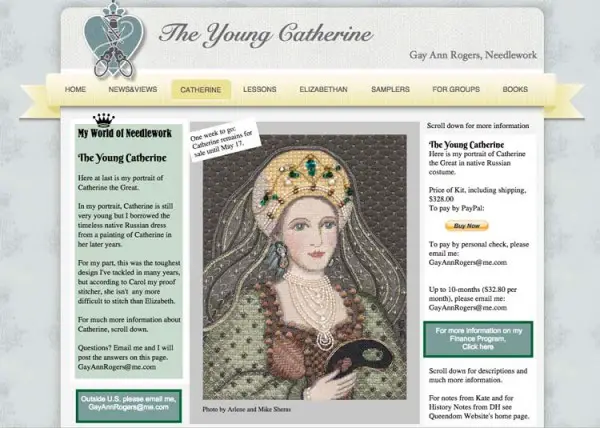
Are you going on a vacation now that the biggest project to date has been released?
No, Kate Gaunt has set up a classroom for me at Shining Needle Society; it’s not a formal class, it’s a Stitchalong Group. I think I’ll be leading it for a year. It will be a fun year, watching a group of Catherines come to life. When I taught my portrait of Elizabeth 1, I posted a bunch of them and it was fascinating how each Elizabeth had a different personality. Stitchers brought a bit of themselves to their pieces and each was a little different — it was super.
Where can stitchers learn more about your designs?
Probably the best place to learn about my designs is on my website, www.GayAnnRogers.com. I don’t have everything of mine posted up there — I’ve been designing and teaching needlepoint for such a very long time (I used to travel and teach for the Embroiderers’ Guild (EGA) and American Needlepoint Guild (ANG); then I discovered the computer and have been online ever since.

